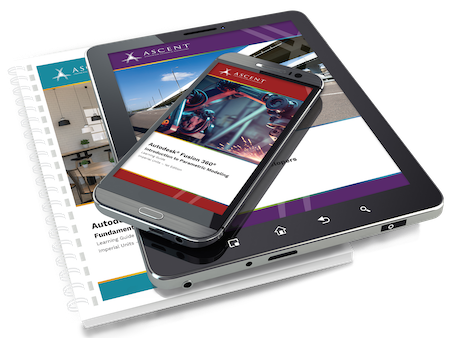In the last few years, we’ve seen a lot of change in the methods people use to maintain and improve their skills with software and other workplace productivity tools. More often now than in the past, individuals and organizations are open to self-paced and asynchronous options and are successfully meeting their learning goals with these formats. While COVID-19 and the increase of employees working from home necessitated exploring these kinds of learning, we’re also seeing a workforce that is ever more comfortable with a self-serve approach to training. Vendors recognize this preference and are tailoring their learning solutions accordingly. Here are a few trends I’m seeing in this space.
Hybrid Content
One trend you’ll see from suppliers of self-paced learning is an increase in the variety of content types. Whether you buy into the concept of learning styles or not, I think it’s fair to say that everybody has a preference for how they take in information and that this preference can change from situation to situation. Even those of us who prefer to read will still look online for how-to videos when a visual demonstration would help. Developers of learning content recognize this and combine multiple types of resources, such as video, text and images, and simulations, into a hybrid approach. Learning content libraries that include a variety of formats naturally cater to a wider audience, so you are likely see vendors that in the past only offered one type of content, such as just text or just video, move to providing content libraries with a greater range of content types.

Designers use a variety of ways to learn how to best use their software. ASCENT offers courseware for Autodesk, PTC, and Dassault Systèmes, to name a few, in print, e-book, as well as an online self-paced platform through the company’s ProductivityNOW eLearning platform. Image source: ASCENT.
Micro-Learning
Micro-learning is another trend that you hear a lot about, although it isn’t new. Simply put, it is serving up learning in small, focused packages of content. If you think of a 20-chapter training guide containing content on multiple topics being used in a training class as an example of macro-learning, then a corresponding micro-learning example could be someone accessing just an individual topic from one of those chapters as needed. It makes sense that this type of content packaging is in more demand at a time when we’re used to consuming news and other information online in concise bits. Micro-learning works well particularly for just-in-time learning — the learning you need when you encounter a task in your workflow that you need instruction on right away to keep working.
Personalized Learning
When people attend in-person open-enrollment training, it’s essentially a one-size-fits-all event. The syllabus followed by the training provider lists the learning objectives and topics to be covered in the course and everyone attending receives the same instruction. For new users of a software who need the fundamentals to get started, I still recommend this as a good solution. For experienced users looking for a refresher or to build on their fundamentals-level skills, a personalized learning path could provide a more efficient use of time. Self-paced learning on a platform that enables flexibility in the packaging and presentation of topics can really be a benefit for the experienced user and will be a growing requirement of learning content libraries.
Micro-learning, as discussed above, within a self-paced eLearning platform lends itself well to a personalized learning path. Like eating from a buffet, you can pick and choose the individual topics you want and complete them in any sequence that works for your situation. This gives you great freedom to focus on only what’s important to you, and it works well when you know what you don’t know.
But, what if you don’t know what you don’t know? If you already have some knowledge on a topic, you may not know what other knowledge you’re missing. This is often the case for those looking to refresh their skills. For those situations, platforms that can assemble or filter content are quite useful.
To do this, a platform for self-learning will need some means of assessing a user’s current state of knowledge or skill. Adaptive courses or learning paths have been around in some platforms for many years. At the start of an adaptive self-paced course, the user is presented with a pre-test before any learning has begun. The purpose of this is to identify the course topics that should be assigned to the user, as well as those topics that can be skipped or treated as optional because the pre-test confirmed the user’s knowledge. This results in a personalized version of the course that can save time. It also lessens the chance of a user not completing a course because they won’t lose interest having to work through topics for which they don’t need training.
HR-Sponsored Professional Development
A key employment benefit for many organizations in attracting and retaining employees is a program of professional development, often administered and tracked by companies’ human resources teams. Many employee candidates are looking for organizations that encourage and enable them to continue developing their skills. A library of self-learning content that offers a wide breadth and depth of content can be an important advantage for an organization.
There are several considerations when looking for a library of self-learning content. Does it have the necessary learning content for the primary need, such as for a particular software? It is worth taking some time to evaluate this to make sure it covers the topics that are needed, delivers the content in formats that work for your team, and can deliver on your objectives for increasing knowledge and skills. Does it have learning content for other secondary topics important to the company and your employees? This could be business skills, health and safety training, and other office productivity tools, for example. Providers that can deliver on more than just one primary training area will support this trend of professional development enablement as organizations look to minimize the number of platforms or learning services they need to subscribe to, implement, and maintain.
Vendor Support
Another trend that will benefit organizations adopting self-learning solutions is the increased support vendors are providing during implementation and throughout the term of the subscription. Vendors are moving away from selling a subscription and then leaving the client to their own devices to roll it out. Instead, vendors are investing in customer success management resources that will partner with a purchasing organization to understand their goals for the self-learning solution and help them develop and implement a strategy for engaging their learners and meeting their goals. It's a win-win strategy for vendor and client when the intended users of the learning content take advantage of it. Vendors are working with clients on communications to their internal teams and helping to acclimate users to the learning content and all the features their learning platform has to offer.
Evolution of Training
With the continuation of these self-paced learning trends, learners can experience increased opportunities for skills development, benefiting both individuals and their respective companies. We can also expect to see further advancements as learning providers find ways to take advantage of and integrate artificial intelligence (AI) tools into their solutions. No matter where the future of self-paced learning leads us, my advice when choosing from current or upcoming solutions is to complete a thorough evaluation before investing, opting for solutions aligned with your team’s needs and objectives. Vendors committed to comprehensive, long-term relationships will support and welcome your evaluation process.
***
Viewpoint articles are tech-focused editorial written by experts from the CAD industry. This article was written by Paul Burden from ASCENT.
Paul Burden
Paul Burden is the Director of eLearning Solutions and Digital Content at Rand Worldwide. Paul has been in the business of technical training and support for CAD systems since 1995. During that time, he has led courseware projects for CAD and PDM software from most of the major developers of this type of software.
View All Articles





Share This Post